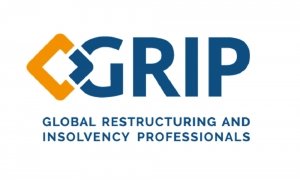Insolvency By The Numbers: NZ Insolvency Statistics re August 2021
August 2021 has been a story of two halves. Between 1 and 17 August 2021, the outlook for economic growth was continuing to look positive. On 17 August 2021, the government called a press conference and, at 6:00 pm that evening, Jacinda Ardern told New Zealand that the country would be moving to alert Level 4 from 11:59 om that night. From 18 August 2021, most businesses were again forced to shut their premises as we returned to Level 4 lockdown and our home bubbles. Those of us that could, readjusted to working from home but Level 4 left many businesses unable to operate. The short notice also meant that many businesses – including those in hospitality, agriculture (who do not supply to the supermarkets), and floriculture – suffered huge losses of product as a result of the lockdown announcement.
Since the COVID-19 pandemic began, at least part of New Zealand has been in an Alert Level 3 or Level 4 lockdown for a total of 91 days to the end of August 2021. All of September and at least part of October will add to this total.
According to Statistics New Zealand, electronic card transactions in August 2021 was $6.433 billion, down $1.257 billion when compared to July 2021. Spending on consumables was up by $216 million but spending in all other categories were down:
The increase in the OCR that was being anticipated in the first half of August 2021 did not eventuate at the 18 August 2021 OCR announcement, a decision made off the back of the just re-introduced Level 4 lockdown. The Reserve Bank confirmed that the OCR is below the neutral interest rate, estimated to be around 2 percent, and said that its economic projections imply OCR increases are coming. The language used at the OCR review in August 2021 strongly suggested that the OCR could increase as early as 6 October 2021, when the OCR is next reviewed. We will know shortly whether the Level 4 and Level 3 lockdowns, especially in Auckland, have caused further delays to the anticipated OCR increases. Further increases to mortgage lending rates by the banks in September 2021 indicate that expect the answer to be no.
If you want to have a free chat about any issues your business is experiencing or about any other insolvency matter, contact us on 0800 30 30 34 or email This email address is being protected from spambots. You need JavaScript enabled to view it..
Company Insolvencies – Liquidations, Receiverships, and Voluntary Administrations
In August 2021, New Zealand spent 14 days in Alert Level 3 or higher. While the total number of corporate insolvency appointments in August was only down by 11.4 percent when compared to July 2021, the appointments over the lockdown period account for just 29.5 percent of the month’s total appointments.
There were four receiverships in August 2021, all of which started before the country went into Alert Level 4 lockdown. Four companies that entered voluntary administration earlier this year were put into liquidation at their watershed meetings this month. Of the two voluntary administrations in August 2021, one of the companies is now in liquidation and in receivership and the other has not yet reported on the outcome of its watershed meeting.
If the country had not gone into lockdown in the middle of August 2021, we expect that the appointment numbers would have been closer to the August 2019 (149) and August 2020 (154) appointments and the year to date appointments would have continued to approach the level of appointments in the year to date in 2019 and 2020.
Notable insolvency appointments in August:
- Three of the Sacred Hill Vineyard entities have been placed into liquidation. These companies have been in receivership since May 2021.
- WNMC Limited (Wellington Night Market Cuba) is no longer trading and has been put into liquidation.
- Diners Club (NZ) Limited, who used to provide credit card services through The Warehouse, is going through a solvent liquidation.
Personal Insolvencies - Bankruptcy
The personal insolvency numbers have been fairly consistent since April 2021. The number of bankruptcies in August 2021 were lower than in July but the number of Debt Repayment Orders was higher.
As the cost of living continues to increase and businesses are put under more pressure, we expect that there will be more payment defaults and demands made on guarantors. Personal insolvencies are likely to increase as a result.
Winding Up Applications
The number of liquidation applications was the lowest year to date in August 2021, with only 41 advertisements appearing. By way of comparison, there were 75 advertisements in July 2021 and 83 advertisements in June 2021. The IRD advertised half as many applications in August 2021 as it did in July 2021.
We expect that the inability to serve documents at Alert Level 4 has affected the August advertising figures. The extension of Alert Level 4 into September and Alert Level 3 into October 2021, together with the IRD and many other businesses putting debt enforcement on hold while businesses are affected by lockdowns, will mean that advertising of winding up applications will be affected by the lockdowns for some time.
Many businesses are suffering from lower turnover because of lockdown why still incurring fixed overheads and operating expenses, which means many businesses have been operating at a loss for some time now. A number of Auckland retail businesses also lost out on potential sales when Auckland was in Alert Level 4 so could not operate but the rest of New Zealand was at Alert Level 2 and able to dispatch goods to Auckland customers.
While everyone understands that most businesses are doing it tough, the situation is precarious. For every business that closes its doors, employees will lose their jobs. While a company’s suppliers may be able to provide some breathing space in the short term in the hopes that the business’ cash flow will recover, that supplier will also have to deal with its own creditors. To date, we have not seen very many iconic businesses fail in New Zealand as a result of COVID-19.
When Mainzeal collapsed, there was a domino effect through the market, the effects of which are still at play. It remains to be seen whether, when (or if) the first large New Zealand business fails because of the COVID-19 pandemic, the house of cards will come tumbling down.
GRIP - Access to trusted insolvency experts worldwide
Our membership with the Global Restructuring and Insolvency Professionals (GRIP) network gives our clients and their referrers access to qualified and highly experienced insolvency and business recovery practitioners in over 36 countries worldwide.
The GRIP network was created in 2014 in Europe to provide a cross-border referral and marketing network for independent insolvency firms. Members are invited to join and commit to supporting each other to secure locally based work and resolve complex issues. GRIP members are based in Europe, Canada, Central and South America, Australia and the Asia-Pacific region.
Whether you need professional assistance with restructuring, selling assets, or winding up a company, a fellow GRIP member who has strong local knowledge, understanding of local regulatory and legal requirements, and contacts can help ensure a smoother process and optimal outcome.
Contact Iain McLennan today to find out more about our international connections via the GRIP network on +64 9 303 0506 or by email: This email address is being protected from spambots. You need JavaScript enabled to view it.
Covid-19 Support from IRD and Wider Government
Inland Revenue on Covid-19 Impact Video Link Here
The IRD have advised that if taxpayers are adversely impacted by COVID-19, and they pay the outstanding core tax as soon as practicable that they will automatically write-off any penalties and interest. Taxpayers who are impacted by Covid-19 are suggested to apply for instalment arrangements. Customers who may already be in an arrangement but consider they may not be able to continue with the current terms due to being significantly affected by COVID-19 may ask to renegotiate an instalment arrangement. The key message is to get in contact with IRD.
It is the Commissioner’s view that a customer has been significantly adversely affected by COVID-19 financially where the customer’s income or revenue has reduced as a consequence of COVID-19 and that as a result of that reduction in income or revenue is unable to pay their taxes in full and on time.
The type of relief available for new debt due to COVID-19
• Instalment arrangement
• Instalment arrangement - deferred payment start date
• Partial write-off due to serious hardship and payment of the remaining tax by instalment or a lump sum
• Partial payment and write-off the balance under maximising recovery of outstanding tax
• Write-off due to serious hardship
You can request interest and penalty remission due to COVID-19 through myIR under the “I want to” menu by choosing “Notify of impact by COVID-19”. To request remission of penalties and interest you will be asked to confirm that:
• Some, or all of the amounts owing were due on or after 14 February 2020,
• Your ability to pay by the due date, either physically or financially, has been significantly affected by COVID-19,
• You have contacted the Commissioner as soon as practicable to request relief and your client will pay the outstanding core tax as soon as practicable.
Wider Government support available for businesses adversely impacted by COVID-19
There are a wide range of support measures available for businesses. A summary is in the table below (courtesy of IRD), and full details are available on the www.business.govt.nz webpage Financial support for businesses — business.govt.nz.
If the position is dire and this is the last straw, our staff are availalble to discuss insolvency options for companies. If you just need time, we recommend getting in contact with your tax agent to communicate with IRD and seek an instalment arrangement.
Insolvency By The Numbers: NZ Insolvency Statistics re July 2021
July has mirrored the insolvency appointment figures over the last couple of months. The pressures affecting our economy have also remained fairly consistent over the last few months:
- Countries are continuing to fluctuate in and out of COVID-19 lockdowns
- Businesses and consumers are facing ongoing shipping delays and supply shortages
- Consumer demand for goods continues to exceed supply in many areas
- Labour shortages remain an issue
- Inflation remains higher than RBNZ’s targets and the affordability of goods remains an issue
To the end of July, the outlook for growth has continued to look positive:
- Unemployment rates have now fallen to pre-COVID-19 rates.
- The construction industry and the housing market continue to run hot
- Consumer spending remains strong
- The Reserve Bank has halted its Large Scale Asset Purchase programme
At the beginning of this week, most economists were predicting that the OCR would increase in the first time in 7 years. While the messaging continues to be that we should expect the OCR to increase before the end of the year, with a view to moving to an OCR of 2% by the end of 2023, subject to the impact of the latest COVID-19 lockdown. By the end of July, banks had already increased interest rates over the last couple of months, anticipating the August 2021 OCR increase that did not eventuate. We doubt that banks will decrease their mortgage rates before the next OCR update, given the indications that we should still be expecting the OCR to rise.
Data shows that 80% of residential borrowers currently have their mortgage interest rates locked in for 1 year or less, largely as a result of the historically low mortgage rates that have been on offer over the last few years. For new home owners with a 30 year mortgage, a 2% increase in mortgage rates will increase the monthly repayments on a $500,000 loan by around $550 per month. If wages do not increase in line with the cost of living, many could struggle to meet theses higher repayment obligations.
If you want to have a free chat about any issues your business is experiencing or about any other insolvency matter, contact us on 0800 30 30 34 or email This email address is being protected from spambots. You need JavaScript enabled to view it..
Company Insolvencies – Liquidations, Receiverships, and Voluntary Administrations
The number of company insolvency appointments in July 2021 were:
- Consistent with May and June this year, both by number and type of appointment
- Comparable to July 2020 but there were significantly more court appointments in 2021 (up around 68%)
- Down 20% compared to July 2019
The spike in solvent appointments is likely attributable to companies waiting for their financial statements to be prepared following the end of the 31 March 2021 financial year and other companies having a 30 June or 31 July balance date.
The number of liquidators being appointed by the Court on insolvent liquidations increased from 37% in June 2021 to 44% in July 2021. This trend is not surprising, given the number of liquidation applications that have been advertised in 2021.
Notable insolvency appointments in July:
- Receivers have been appointed over West Coast Brewery (New World Investment New Zealand (in receivership)). The business was listed for sale after one of its key people, a non-resident, could not get into New Zealand due to COVID-19 boarder restrictions. When the receivers were appointed, the business had not yet been sold.
- Many of the companies that were subject to insolvency processes this month operated in the following industries:
o Construction
o Dairy
o Forestry
o Hospitality
Personal Insolvencies - Bankruptcy
The number of personal insolvencies has been fairy consistent month on month since April 2021. Bankruptcies were around 24% higher in July 2021 than in in the previous few months, which correlates to fewer no asset procedures and debt repayment orders in July. This shift might indicate that the there has been more payment default on bigger debts.
As the cost of living continues to increase and more companies fail, we expect that there will be more payment defaults and demands made on guarantors. Personal insolvencies are likely to increase as a result.
Winding Up Applications
The IRD’s enforcement activity has continued but the numbers have eased off slightly since June 2021. It was the petitioning creditor in 66% July’s liquidation application and continues to lead the way by advertising 67% of all creditor applications in the year to date.
In the year to July 2021, 418 winding up proceedings have been advertised and 255 of the named debtors (61%) have ended up in liquidation. The IRD has advertised 161 (63%) court applications. The table below shows the number of companies that have gone into liquidation after their liquidation applications were advertised and how many of those were advertised by the IRD.
Insolvency By The Numbers: NZ Insolvency Statistics re June 2021
We have passed the halfway point of 2021 and it is now less than six months until Christmas. Quite a bit has happened in the first half of the year so let’s look at how the NZ economy has tracked to June 2021.
The global economy continues to face a number of challenges, which are impacting many countries to varying degrees:
- Countries are fluctuating in and out of lockdowns as a result of ongoing COVID-19
- Shipping delays are continuing
- There are materials shortages affecting many industries
- Consumer demand for goods continues to rise while international travel continues to be restricted
We see the building industry as one to watch. In New Zealand, COVID-19 brought a further increase in demand for housing as New Zealanders returned from overseas, many of them with house deposits. Because of ongoing shortage of housing supply (materials and labour), upward pressure is being put on housing prices. While the building industry appears to be picking up, the travel bubble between Australia and New Zealand may entice some builders to Australia to take advantage of the better wages and lower cost of living on the other side of the ditch, which will not help New Zealand’s house shortage.
Core Logic has reported that house price growth slowed down in May and June 2021, especially in the larger centres. It is too early to know whether this decrease in growth is the result of changes to the interest deductibility rules for property investors and/or an increase in the bright line test from five to ten years. Interestingly, mortgage rates under two years decreased while mortgage rates over two years increased in June 2021. As we now know, the short-term interest rates have since increased. We will also need to wait to see whether property investors start to exit the market, once they are faced with higher tax obligations on their rental properties, and whether fewer property investors will enter the market now that the bright line test has doubled.
As we anticipated in May 2021, we are seeing early signs that inflation is returning to the economy. Expectations out of Wellington are that inflation will be above the 1% to 2% target in the June and September 2021 quarters and will then return to within the target range after that. Experience would suggest that prices are quick to go up but are slow to come down and it is unlikely that the shipping delays and supply shortages currently being experienced will be resolved by the end of the year.
Off the back of the inflation figures, economists have been reviewing their OCR predictions and many are now expecting to see interest rates rise further before the end of the year. It is not surprising that the banks have already increased interest rates. Many are now expecting that the OCR will be back up at 2% by the end of 2022 to keep inflation under control. For new home owners, the predicted increases in mortgage rates could see those currently locked in at low rates really struggle with repayments when those fixed rates expire.
If you want to have a free chat about any issues your business is experiencing or about any other insolvency matter, contact us on 0800 30 30 34 or email This email address is being protected from spambots. You need JavaScript enabled to view it..
Company Insolvencies – Liquidations, Receiverships, and Voluntary Administrations
Company insolvency appointments for June 2021 were:
- similar to May 2021
- higher than June 2020
- similar to June 2019 – the first time the 2021 monthly figures have been close to the monthly figures in 2019
Insolvency numbers have increased steadily over the June 2021 quarter and are higher than the same quarter last year. This increased activity is likely the result of a jigsaw puzzle of factors including the increased pressure being put on companies by the IRD, labour shortages in many industries, seasonal show downs in some sectors, and the very limited number of overseas tourists that have visited since New Zealand’s boarders were first closed. While we saw Wellington move to Alert Level 2 for the last week of June 2021, affected businesses who met the Resurgence Support Payment criteria were able to apply for a lump sum government support payment.
Notable insolvency appointments for the month:
• ASB Showgrounds (Auckland Agricultural Pastoral and Industrial Shows Board) went into liquidation. It has been reported that the cost of the ground rent made it unsustainable for the venue to continue operating.
While there were no other companies of note that had insolvency practitioners appointed in June 2021, there were quite a few appointments in two industries, despite perceived booms in both industries:
• building and construction
• transport and logistics
Personal Insolvencies - Bankruptcy
The June 2021 personal insolvency figures closely mirror the May and April 2021 figures, in both numbers and breakdown by type. If inflation and mortgage rates both rise, as predicted, we expect the increasing cost of living will see more payment defaults, which will likely result in more personal insolvencies.
Winding Up Applications
The IRD’s activity continued to ramp up through to the end of June 2021. It was responsible for advertising 76% of all June 2021’s liquidation application.
There has been 341 winding up proceedings advertised in the year to June 2021 and 210 of those (61%) have ended up in liquidation. The IRD has been the petitioning creditor in 130 of those applications (62%).
Insolvency By The Numbers: NZ Insolvency Statistics re May 2021
Let’s look at the NZ economy and the insolvency space in May 2021.
In the media, the concerns about the current labour shortages grew. While these concerns were previously focused on the horticultural sector (a shortage of pickers during harvest) and the hospitality sector, the number of industries calling out for workers is increasing. Of late, the labour shortages in the construction sector – an issues that has been around for some time – have been noticeable, as anyone who has tried to organise a tradie or become a DIY expert thanks to YouTube can attest to. Supply shortages for building materials is also biting, which is not helping New Zealand’s ever present housing crisis.
The pressure points for the economy continue to loom. While some critical issues are being addressed urgently to address their negative impact, other issues have been put to the back burner. It looks like shipping issues and materials shortages will be with us for some time. China has gone on a materials spending spree but has overwhelmed its ports in the process. China’s ports backlog has the potential to cause more shipping disruption than the March 2021 Suez Canal blockage – the canal was blocked for six days but disrupted global shipping for months plus the vessel and its $3.5 billion in cargo has not yet been released.
There is continued talk of the pressure on the NZ housing market. Although the government and others are looking to increase supply, they are constrained by both material and labour shortages. It looks like the house price projections outlined by the government in their last budget seem overly optimistic and, when looked at critically, unrealistic.
Inflationary pressures are continuing to creep into the economy. The cost of goods is on the rise as a result of supply shortages, wage increases, and government policies that have increased the cost of doing business. The Reserve Bank will likely tolerate these inflationary pressures for a time but some economists are questioning whether the projected OCR increases will be brough forward. Banks have started to price interest rate increases into their longer- term (3+ year) mortgage rates but, paradoxically to some, lowered their shorter term interest rates. As mortgage rates rise, many will start to feel the pinch, especially those who took out a mortgage after mid-2008, as we have been in an environment where the OCR has tracked down and interest rates have generally been on a downward projection. In March 2008, the average one year “new standard residential mortgage interest rate” was 9.9%, in March 2009 it was 5.76%, and in March 2021 it was 3.24%.
If you want to have a free chat about any issues your business is experiencing or about any other insolvency matter, contact us on 0800 30 30 34 or email This email address is being protected from spambots. You need JavaScript enabled to view it..
Company Insolvencies – Liquidations, Receiverships, and Voluntary Administrations
Company appointments are only slightly down on 2020 levels and the number of insolvency appointments in May 2020 and May 2021 were similar. The types of appointments are, however, quite different. Solvent liquidation have continued their upward trend, with 17.8% of the total liquidations in May 2021 being solvents.
Notable insolvency appointments in May 2021:
• Wine Industry
o Four companies in the Sacred Hill group of companies (including the parent company) had receivers appointed, one of which has also been placed into voluntary administration. Another one of the companies in the group was placed into liquidation by its shareholder.
o Villa Maria’s parent company (FFWL Limited) had receivers appointed.
• Building Industry
o Silverfern Property Services Limited, the largest recipient of emergency housing funding, was placed into liquidation by its shareholders.
o Ormiston Rise Limited, a KiwiBuild supplier, was placed into receivership.
Personal Insolvencies - Bankruptcy
Personal insolvencies have continued to decline year on year and the 2021 figures are lower than comparable periods in the pre-Covid-19 disruption period. Notably, May 2021 figures are only slightly above May 2020. Bankruptcy figures to decline, with many individuals in trouble opting to submit to a No Asset Procedure or Debt Repayment Order. Is this a positive sign that individuals are taking early action in response to financial pressure rather than burying their head in the sand and letting the debt blow out? We will continue to monitor the position.
Winding Up Applications
Winding up applications for the year to May 2021 have picked up slightly month on month. Since the start of the year, the IRD has been applying pressure to those in default and who were given a grace period in 2020. While the IRD was lenient following the Covid-19 outbreak and quiet in the period leading up to the election (which is common), the IRD has advertised over half of all the liquidation applications in the year to date and was the petitioning creditor in more than 80% of all liquidation applications advertised in May 2021 .
To date, 260 winding up proceedings have been advertised. Of those, 160 (61%) have ended up with the debtor company being placed in liquidation. The IRD was the petitioning creditor in 88 of the 160 (55%) of the court ordered liquidations so far this year. This is another trend we will continue to monitor.
Warning for Capital Distributions in Short form Removals - the first step legally necessary to achieve liquidation
The Income tax Act 2007 allows a company to make a tax free distribution of capital gains “on liquidation”.
The IRD issued publication QB20/03 on 11 December 2020. The publication discusses the first step legally necessary to achieve “liquidation” in both the short form (s318(1)(d) Companies Act 1993) and long-form liquidation (s241(2)(a) Companies Act 1993).
IRD have confirmed when “liquidation” occurs under each process. It reinforces BR Pub 14/09 that a short form liquidation commences (for tax purposes) when a valid resolution is passed, when the directors (and/or shareholders depending on the constitution) make the decision to wind up the business, pay all creditors, distribute surplus assets and request removal from the register of companies, and then carry out the short from liquidation process. It also confirms that the first step legally necessary to achieve a long form liquidation is not the same. A long form liquidation commences when the shareholders pass a resolution to appoint a named liquidator.
Can you lose liquidation status?
The commentary talks of the trigger for losing the “on liquidation” status under the short form method. Quite simply, if the company continues to trade after the winding up resolutions under the short form process or before the formal liquidation, there is a risk a capital distribution in that period is taxable. Also, if a company commences a short form process then there is a significant delay or does not complete the formal strike off, earlier capital distributions may be held taxable.
Directors need to be wary that when they decide to wind up their company and opt for the shortform method that they cannot be held to have traded in the winding up process and they cannot incur significant delay without reason. Refer IRD’s example 3 below. The short form liquidation process must lead to the company strike off.
Can you change process from short form to long form?
Example 1 below shows it can take time to achieve a winding up, even years.
Changing processes from short to long form is less clear. The article suggests “unforeseen processes” as a legitimate reason. It does not specify the common position where companies resolve to wind up their businesses, start to carry out that process and then appoint a liquidator to complete the process down the track. Liquidation for tax purposes starts on the winding up resolution and then the formal long form liquidation starts from the shareholder resolution appointing the liquidators by name later. It seems so long as there is a clear intention and reason to change process that this is acceptable.
These are the key clauses relating to the change of process, from my perspective are at 12 and 13 of QB20/03 :
12. Changing Processes “Sometimes, a company that has embarked on a short-form liquidation may find it necessary due to unforeseen circumstances to appoint a liquidator. This could occur, for example, where a dispute arises in the course of winding-up the business that would be better to have a third-party liquidator resolve. The Commissioner considers that the period known as “on liquidation” began when a valid resolution was passed commencing the short-form liquidation process.”
13. Time Delays “In some cases, there may be an extended period between the first step legally necessary to achieve liquidation and the removal of the company from the register. The period may even span different tax years, so that a distribution is made in a period preceding the removal of the company from the register. The Commissioner will assume that any distributions are made pursuant to a genuine intention to liquidate. However, if the liquidation is not completed or, in the case of a short-form liquidation, the company does not cease to trade after a resolution to cease to trade is passed, then such a distribution will not have occurred “on liquidation” and the distributions will be taxable.”
This suggests that a company may change processes so long as there is a genuine intention to liquidate from the outset and “on liquidation” occurs from the initial resolution (so long as further trading does not disrupt that).
The Examples provided
Takeaway
The key message is, so long as your client can clearly show there was no trading after the winding up resolution then there should be no issue with advancing a short form method. For certainty advancing a formal long form solvent liquidation is recommended – particularly for companies with large capital distributions. It removes the risk.
For advice on solvent or short form liquidations contact our team.
Related Article: Ceasing to Trade a Company in New Zealand
IRD focus on Construction Companies
IRD pressure on the Construction Industry
It is important to keep proper books and records and ensure you meet your tax obligations. IRD say “declare it all or risk everything” in a recent announcement.
Late payments and bad debts are the main triggers of insolvency in construction companies. The payment of taxes however contributes to cash flow problems.
IRD’s recent release is heavily focussed on enforcement. Winding up applications by the Revenue are also on the rise generally.
For more information on the Revenue’s latest release relating to “cashies” read here.
Dealing with IRD
We recommend communicating early and negotiating a time payment arrangement if your company falls into arrears but generally your business is viable. The IRD will likely require you to complete an IR591 (12 month cashflow forecast) to support any plan. The IRD provide the following advice for managing tax and for gaining financial relief for companies, partnerships and trusts <read here>
If the financial position of the company is dire then contact a Licensed Insolvency Practitioner to discuss the options. The IRD may consider financial relief or an instalment plan.
There is a high risk of financial penalties for failing to take action. By making a full voluntary disclosure, IRD say you may have your penalties reduced by up to 100%, you may avoid prosecution and you may retain your good business reputation. By communicating early on, your business has more chance of survival. By taking action early as a director you are less likely to be breaching your duties under the Companies Act 1993 and to be held personally liable.
Insolvency By The Numbers: NZ Insolvency Statistics February 2021
Welcome to the month of double lockdowns and Americas Cup racing.
February is typically the first month of the year where we see a steep uptake in all insolvency appointments across the board after the lower months of December and January. Directors will take a hard look at their company after a quiet Christmas period and January break and make the call on whether they want to continue through another year or pack it in. Individuals will often go through a similar process after having spent up large over the Christmas period and having little to show for it and no prospects of paying off the debts they may have racked up and will need to assess their insolvency options.
So aside from staying indoors and watching boat racing what else happened in the month of February on the insolvency stats front:
• Winding up applications for the month beat all individual 2020 months.
• IRD finally began pulling the trigger on winding up applications.
• Personal insolvency figures were up to the 2020 high point levels.
• February figures were still down on prior years.
We continue to hear grumblings from businesses around the country with the upcoming minimum wage increases to $20 per hour and the additional pressure this will put on already tight margins. Banks have not eased up stringency with which they are lending to small to medium size businesses making it increasingly difficult for new businesses to get the necessary funding, while residential lending powers are forward fuelling the property market. We are also seeing increasing material and shipping/logistic costs as product shortages continue as goods cannot be brought into the country fast enough with backlogs at ports across the country.
The latest two lockdowns have done no favours for businesses with the government maintaining some level of support for those businesses negatively affected the most by the lockdowns if they manage to meet the application criteria.
If you want to have a free chat about any issues your business is experiencing or about any other insolvency matters, please contact us on 0800 30 30 34 or email This email address is being protected from spambots. You need JavaScript enabled to view it..
Graphs
Corporate Insolvencies
While the February numbers are still behind the previous year’s February figures, they have begun to approach the higher points of 2020. The bulk of the 129 appointments were made up by shareholder resolution liquidations at 87 followed by court appointments making up 31. This is a reflection on the lower winding up applications figures seen over the closing months of 2020 and the slow January start where the courts remain closed for a time and people remain on holiday. This will likely flow through to later months of the year.
Personal Insolvencies
While the personal insolvency figures remain down on the past 4 years Februarys, similar to the corporate insolvency figures, they come close to the higher points of 2020 levels. Bankruptcies and No Asset Procedures continue at similar levels respectively of 73 & 72, with Debt Repayment Orders dragging up third contributing 27.
Corporate Winding Up Applications
Finally, a graph and figures showing figures higher than 2020 levels across the board. This was boosted hugely by the IRD finally chasing some overdue debts and progressing to winding up applications of 18 for the month compared to non IRD applications of 15. Given IRD had only advertised 7 total applications in the prior 6 months they were long due to pull the trigger on these delinquent debts. Will this be a sign for the remainder of 2020 and the increased winding up applications will flow through to actual appointments? Only time will tell.
McDonald Vague have a team of licenced insolvency practitioners with experience across corporate insolvencies and assisting individuals with alternative options to bankruptcy. We can assist with company compromises, voluntary administrations, receiverships, liquidations, and personal proposals.
When Things Go Wrong
Murphy’s Law (or one version of it) states "whatever can go wrong, will go wrong" and that can appear to be the case when you are running a business in the current environment. If it’s not a lockdown, it’s a shortage of supply, or it’s a major client failing, or it’s another of the myriad of things that can go wrong.
While having good contingency plans in place, including cash reserves or access to a fighting fund, can help your business get through the hard times, when these problems come at you one after another in quick succession, things can turn to custard very quickly.
When that happens, there are things that, as a director of the company, you should be doing and, equally as important, things that you shouldn’t be doing.
What to Do:
The first thing to do, when you have run out of ideas on what can be done to rescue your business, is to seek professional advice. Sometimes, all it needs is for someone who has the required expertise and experience and is one step back from the frontline, to look at what is happening and come up with viable rescue options. These could include –
- A compromise with creditors in which the creditor agrees to receiving an agreed percentage of the amount owed to them, with the balance written off, allowing the company to continue trading.
- A Hive-down which transfers the valuable or profitable parts of a failing business to a new entity with the market value of the assets transferred paid to the failing business for the benefit of its creditors.
Consider your duties as a director of the company – to act in the best interests of the company or, if the company is insolvent, to consider the interests of the creditors. Take steps to ensure that you don’t allow the company to continue operating if it is going to increase the risk to creditors of the company.
What Not to Do:
Don’t put your head in the sand and decide that the only option is to keep working harder in the hope that things will come right in the long run. All you may be doing is digging the hole deeper.
Don’t put your personal interests ahead of those of the company or its creditors.
- It is not a legitimate transaction to move all of the assets out of the failing company into your own name, or into the name of a new company that you have set up, without making payment to the failing company of the true market value of the assets moved.
- It is not appropriate to use company funds to repay yourself, for unsecured funds advanced to the company, ahead of making payment to the company’s other creditors such as the employees, IRD and trade suppliers.
- Do not continue to operate the company so that you can repay creditors who may have a personal guarantee from you but, at the same time, increase the amount that is owed to other creditors.
If liquidators are appointed to the company, either by the shareholders or by the High Court, the liquidators will look at the steps you have taken, as director, and consider how your actions have impacted on the creditors.
If you took actions that were to the detriment of the creditors, you may be held personally liable for the losses they incurred.
Conclusion:
The failure of the company may not have been as a result of anything that you did, or didn’t, do, but your actions once the issues have arisen can have a marked effect on the outcome for creditors and on any personal liability you may face.
As soon as you identify that your company is, or will become, insolvent, you need to get the professional advice required and take the appropriate actions required of you as a director.
If your company is facing solvency issues, please contact one of the team at McDonald Vague for a free initial discussion about your company and the options available.










